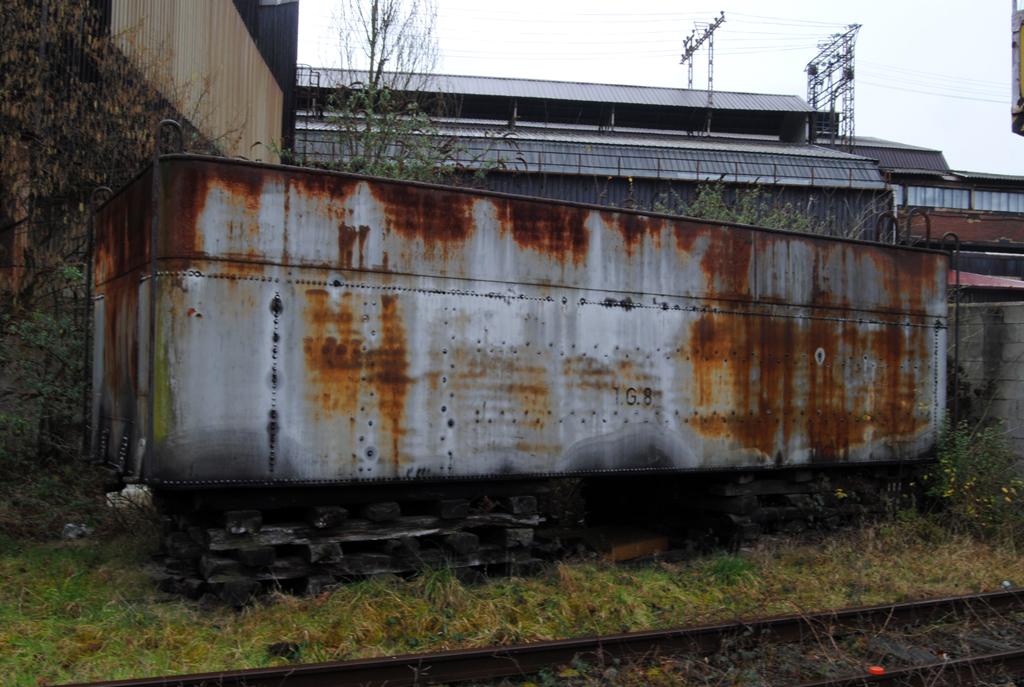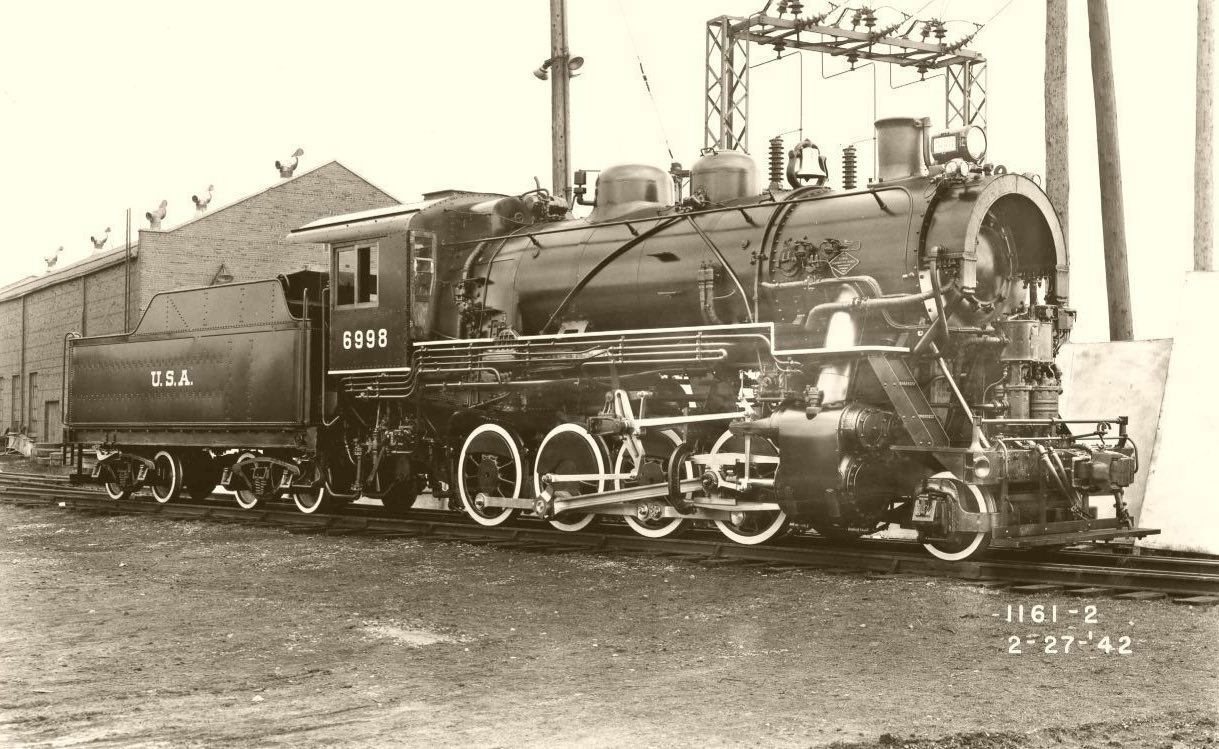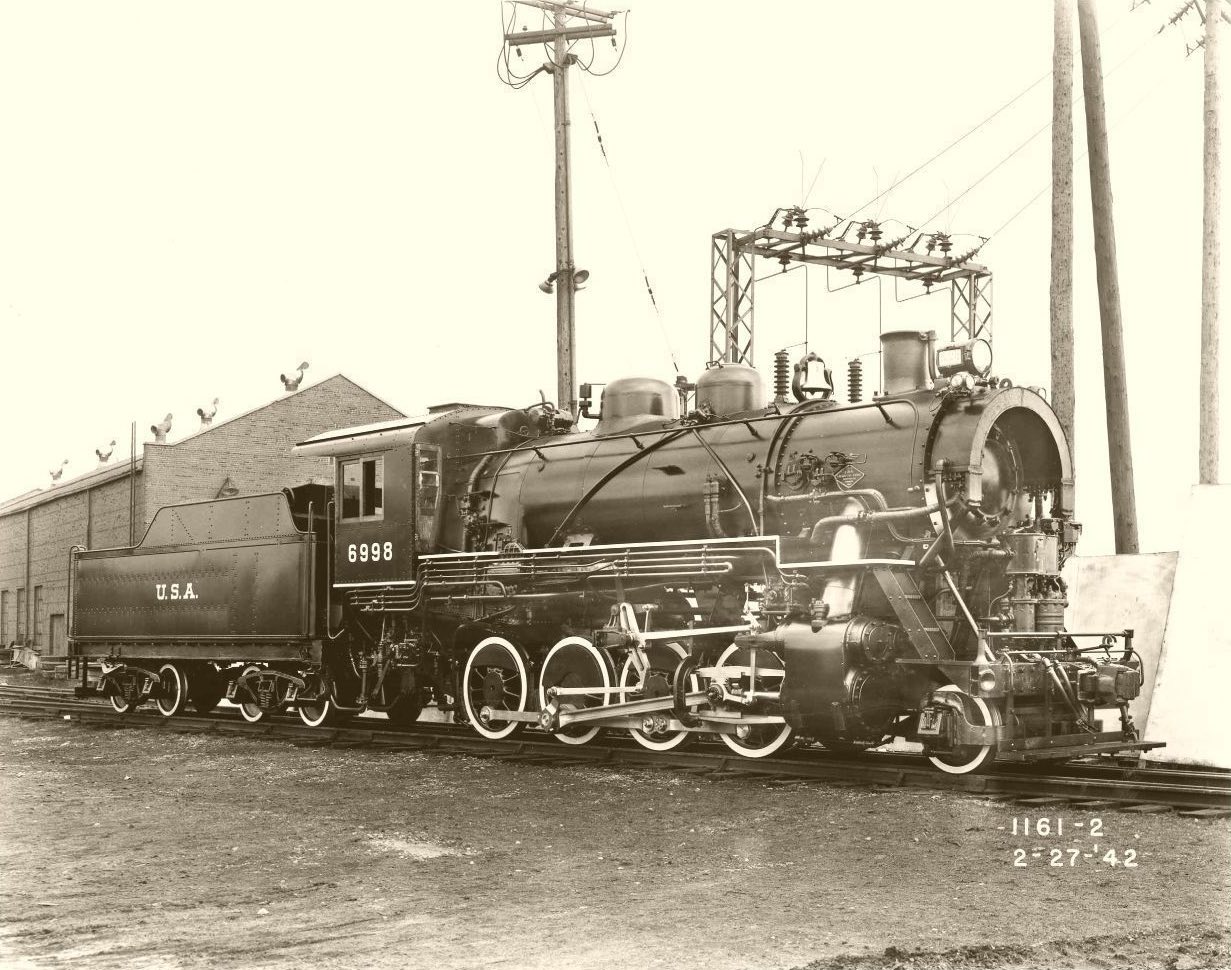FC LangreoEngland resident Philip Wormald was planning a trip to Spain. Pat Durand made the following request to him, "While in Spain keep an eye open for thirteen steam locomotives that left Alaska on board a heavy lift ship the Bell Betty bound for the Iberian Penn about 1958. Several ex Panama Moguls, some S160s - a Pacific 4-6-2 and a Mikado 2-8-2 and a Mountain 4-8-2. We lost all contact and presume they may have gone to scrap after they got there." On April 13, 2005 Philip replied, "Information I have so far is: The Alaska engines went to the FC Langreo, a standard gauge line which used to run south from Gijon. Not all of them entered service. There are photos of some of them, in service, in the Gijon Museum. The FC Langreo is still in business, now part of FEVE (it has been converted to metre gauge). I heard four were used. Will try and get more information."
|
||||||||||||||||||||
Added 2/3/10 First of all, congratulations for your excellent
website; it's a fascinating insight into a such remote (for me) railroad. Secondly,
I am a bit surprised as so little contributions have been made about the fate
of the ARR steam engines that came to Spain. I would like to help with some
information about them; I hope they would be of your interest. Among the first to come were the engines bought in Alaska, which landed at El Musel harbor (Gijón) on 25-2-1958. The shipment consisted on 12 engines: S-159 #401, 402, 404, 405 and 406; S-160 #552, 555, 558, 559 and 560; Mikados #701, 702 and 703 and Pacific #901. Langreo had previous experience with American built engines: in 1917 had bought Vulcan 0-6-0Ts which were later copied in Spain and had given excellent service, so the bigger, the better: new eight-coupled engines would haul Erie hoppers forming trains with automatic brakes and couplings (obviously, the Pacific was intended for passenger use). But the plan failed as engines were too big for the Langreo loading gauge, specially for the old, narrow Carbayín tunnel. Eventually, the railroad decided to modify the more powerful S-159 and four were so treated, 401 being kept for spares. Modifications included cut tender tops, cabs with lowered roofs and slope sides and front pilot substituted by Langreo hook couplings and buffers. They became popular and were photographed several times and even recorded on movies hauling the old fashioned, 1890s vintage coal hoppers. Finally, main line steam operations ended in 1968 and the engines were withdrawn and scrapped shortly afterwards. Available data about these engines is as follows:
At least one tender (I think it came off a S-160) was converted into a tank wagon and used for auxiliary duties. Although the former Langreo line (taken over by FEVE in 1972) was converted from standard to meter gauge in 1983-84, this tender was still abandoned at La Felguera station in 2002. I don't know if it is still there, I will check as soon as possible. I hope this would be useful to clarify this interesting matter. Best wishes, |
||||||||||||||||||||
Added 3/2/10
|
||||||||||||||||||||
Stephen Lowe - "I am seeking information about the eight US Army Class S159 consolidation locomotives produced by Lima in 1942. Your site has great information about the disposition of those that went to the Alaska Railroad and afterwards. Your roster info states that US ATC #6998 and #6999 became ARR#501 & #502 in 1942 and that the other four (US Army #6994, #6995. #6996 and TC#10 were acquired in 1946-47. Are you able to indicate from which railroad operation/location the #6994, #6995 and #6996 came from? I know that the TC#10 came from Camp Claiborne La. Since the TC#10 was numbered ARR #503, and it was last used in train service at Camp Claiborne on the railroad on August 10, 1945, did it arrive before the others? Do you have exact dates when they all arrived, obviously by ship? Do you have a photo of the #503-403. I assume that it was converted back from an oil burner as TC#11 at Camp Claiborne was also an oil burner. I have seen a photo of the TC#11 without outside bearings on its leading truck. I would like to know whether the #503 - #403 had outside bearings. The #402 was wrecked in 1951, can you please elaborate on what happened and the nature of repairs for it to be sold to Spain in 1958? I have attached two builders photos of US Army 6998 for your website. The reason I have asked all this is that I am trying to establish a locobase entry for the Class S159 locomotives on website Steamlocomotive.com. I would appreciate being able to use any photos or the outline drawing of this class from your website.
|
||||||||||||||||||||
I deferred Stephen's email to Dick Morris who replied, "It will take some research to dig up all the information I have, but for a starter, take a look at our Facebook page, "557 Restoration Company." In early April. I summarized some of the information I found on the earlier design of USATC Consolidations. "Note that it is very unlikely the S-160, S-159, etc., designations for the USATC locomotives was ever officially used by USATC or any of the builders other than ALCO. It was apparently a internal designation used by ALCO. It appears that Tourrett found it in some ALCO documents during his research of WWII locomotives and extrapolated it to all the designs. I have only seen an official use of that designation system on one "S-160." It was one to the standard design and the ALCO photo card included "S-161" on the card. We have about 400 pages of technical notes and memos prepared for the design of the S-160s as well as about 1,000 of the drawings. Nowhere does "S-160" appear. Baldwins designation for the class is 280 19S and this shows up on some drawings as well as being stamped,l along with the serial number, on many parts of the locomotive. As the "S-159s" were built by Lima it is even more unlikely this designation applied to that deisign untill long after the locomotives were removed from service. This system designation has been so fully adopted by rail fans that it is unlikely to ever be corrected, but it's something that you should be aware of. "The first two 500/400 class Consolidations were in service on the Alaska Railroad in 1942, before they received the first S-160. Among the documentation to justify retiring the steam fleet was a card saying that 401 and 402 were purchased from Lima and 403 through 406 were obtained as war surplus. The same document says they were placed in service in 1947. However, that isn't correct because there is a March, 1944 boiler inspection report showing locomotives in the 500 class. I didn't make copies of earlier boiler reports because my interest was in the S-160s and this was the first report I found with any of them listed. I found some info on their purchase and it is attached. They were shipped "knocked down" (which probably means the boiler was removed) because of limitations in the crane size at Whittier. When purchased, the ARR had serious problems with having the motive power for increased war needs. a number of the locomotives then in use had come from the Panama Canal and were over 30 years old. "I've attached reports on the wreck of 402 (1, 2). The 400 class apparently had a reputation for derailing and I've attached some correspondence on the problem. ""When collecting drawings and technical info on the S-160 locomotives, CSRM and Allen Historical Society, both repositorys of Lima information, also provided some information on the earlier USATC Consolidations. They apparently didn't realize that they were two different designs. I think I have photos of a boiler, a boiler drawings, calculations and form 4 certification for the boiler, and calculations for sping rigging and some other engineering notes. I'll have to see what I can find. How much of this are you interested in? "I have some more info on the connection to Camp Claiborne connection that I'll have to track down." See also 6998 and 6999 acquisition information. |







